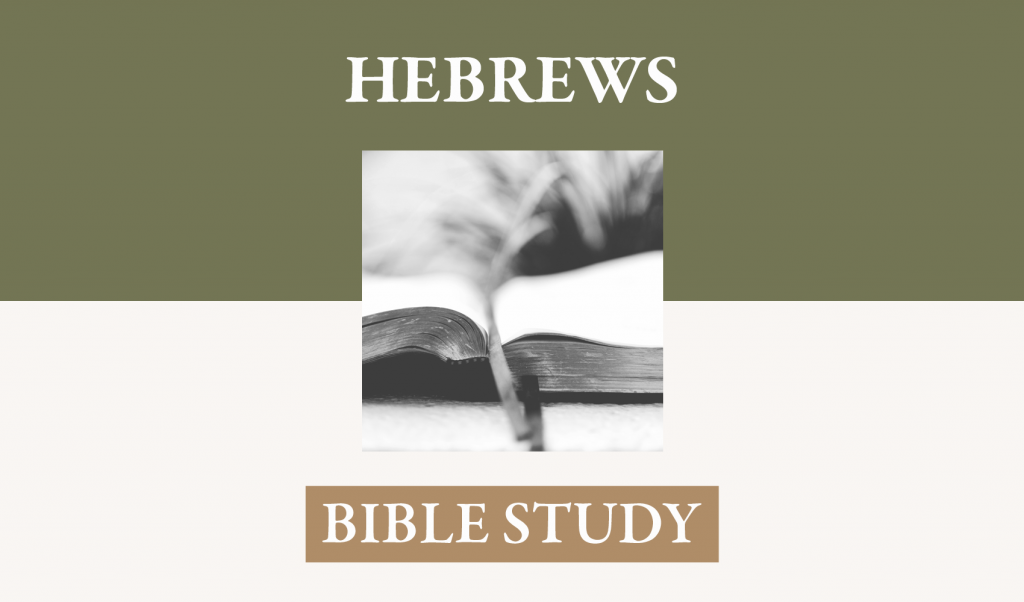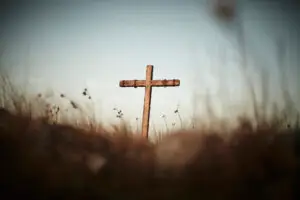I. The Setting of the Argument: 9:1-10
A. The arrangement of the Tabernacle – 9:1-5 – Everything indicated that sin must not be dealt with piecemeal, but that some grand and final offering was necessary. This would take place in the
B. The Required Actions of the Priest – 9:6, 7 Going into the first section, the
C. Their continuity a witness to the inefficacy – 9:8-10
1. That the High Priest must offer sacrifice first for his own sins showed that he is insufficient to offer a fully effective sacrifice for others.
2. His offering in the
II. Every symbol and type now fulfilled in Christ and his redemptive blood – 9:11-15
A. The Place into which Christ entered to perform his service is superior – 11, 12a
1. When Christ performed his specific high priestly work, it was to be performed in the context of a greater and more perfect tent, or tabernacle, a holy place “not made with hands, not of this creation”, the very presence of God. His work was done to reconcile all the attributes of God’s holiness to the purpose of redeeming, granting forgiveness of sins, to the transgressors. It was not a mere symbol nor something that had only temporal significance, but an act of sacrifice that would answer all that was needed for God to be just and yet justify those who would believe in Christ.
2. Note that his entry was into the “holy places,” both the “first section” and the “second section” [verses 2, 3). Jesus’ sacrifice eliminates the need for sacrifices completely. Those daily sacrifices being offered for sins, even at that moment in
B. The means of his entry was superior – 12
1. Negatively – “Not by means of the blood of goats and calves
2. positively – “But by means of his own blood.”
3. Entry by the blood of animals has no moral quality to it as they are not moral beings and have no personal guilt to be atoned for. Humanity, made in the image of God is under the curse of the Law, and must, therefore, find forgiveness of sins, the removal of the curse, only by means consistent with the just requirement implied in such a curse. Who can remove the curse? He must be a man who owes nothing of his own by way of recompense. At the same time, he must be fully capable by the excellence of his nature to offer something commensurate to the insulted honor and authority of the Lawgiver. This alone can provide sufficient satisfaction to the justly imposed penalty.
C. The Result of his entry was
III. The comparison, from the lesser to the greater.
A. For if . . . How much more: Note the use of this pattern in other places [1:4; 2:2, 3; 4:8, 9; 7:11; 8:6, 7]
B. Those ceremonial sacrifices provided safety from an immediate display of divine wrath in temporal matters: They were a reminder, as it were, of the covenantal purpose of God to preserve this people in order that the Messiah could come. It kept them pure as a nation, a peculiar people in the flesh, “and from their race, according to the flesh, is the Christ who is God over all, blessed forever. Amen” (Romans 9:5)
C. How much more: If they were preserved as a people temporally through the covenantal value of those ceremonies, of how much more value is the blood of Christ, the man who is “God over all,” who offered Himself “through the eternal Spirit.”
1. Through the eternal Spirit –The operation of the Holy Spirit in the humanity of Christ from the moment of conception to the resurrection was essential to Christ’s attaining to the righteousness that made his sacrifice acceptable and served as the foundation for justification.
2. “Offered himself,” He does not offer the life of another, or the life of a non-moral being, but he offers himself, his own life as the infinitely glorious Son of God.
3. Unblemished – The offering of animals had to be unblemished physically in order to be acceptable [Malachi 1:7,8 for God’s anger in the Jews’ failure to take this seriously]. Jesus had to be unblemished morally.
4. In light of the perfection of the sacrifice and its necessary effectual satisfaction of the offended justice of God, one who rests in Christ and his perfection may have purity of conscience from his fruitless efforts to gain standing by his own works—they are dead and without merit. Now the believer rests in one whose works were perfect, done in the power of the Holy Spirit, without blemish. Our service to God—our purpose in creation—is now acceptable. Now, he “work[s] in us that which is pleasing in his sight, through Jesus Christ.” (13:20)
















